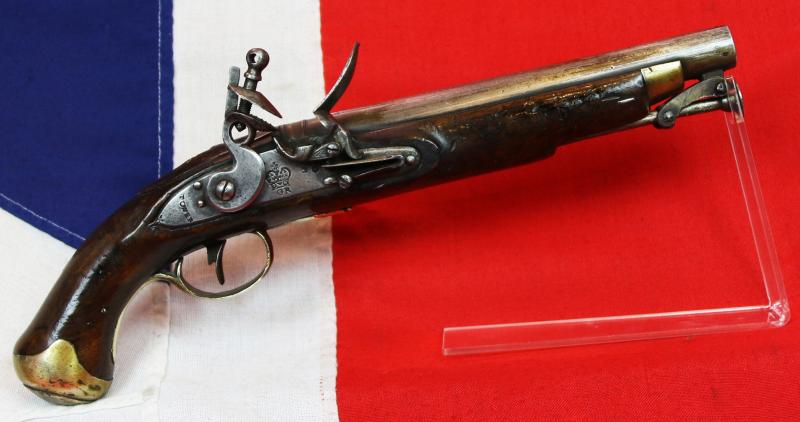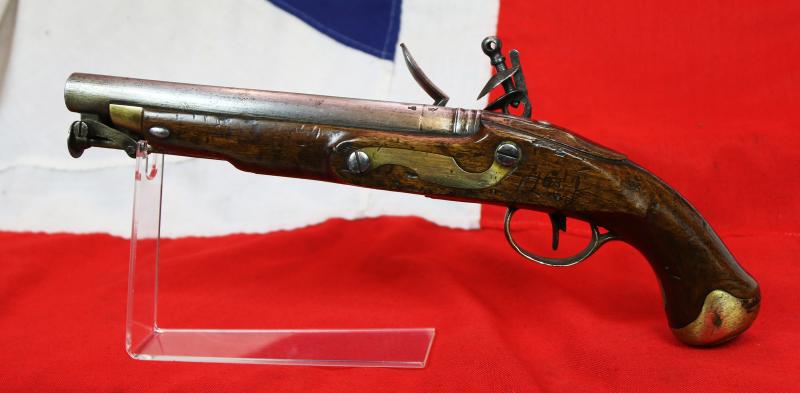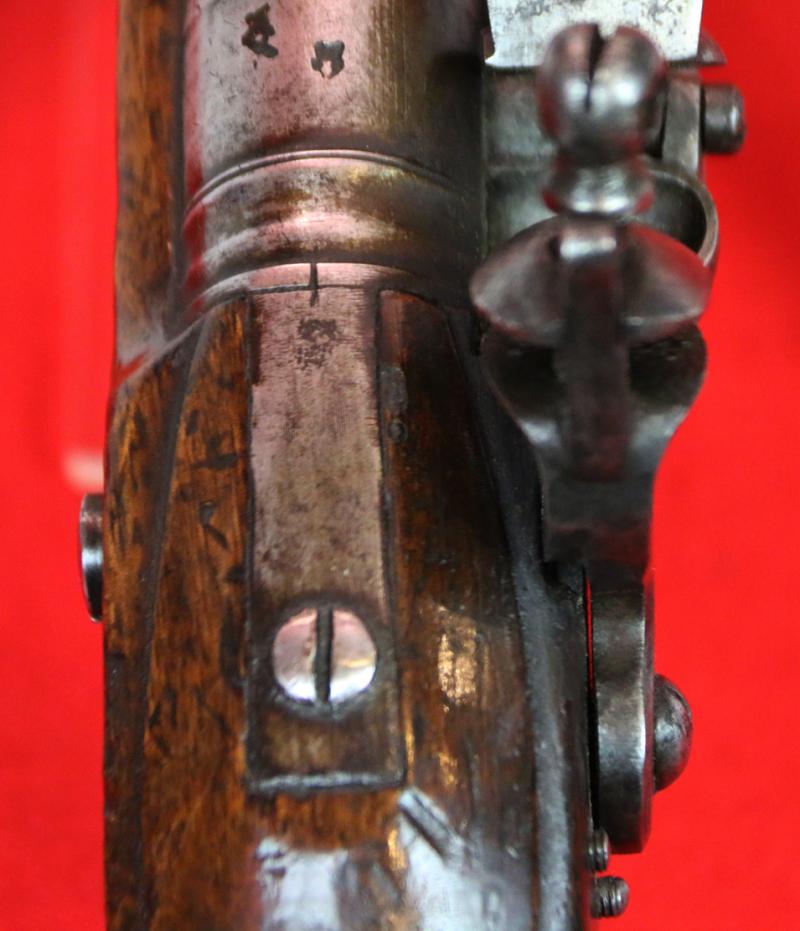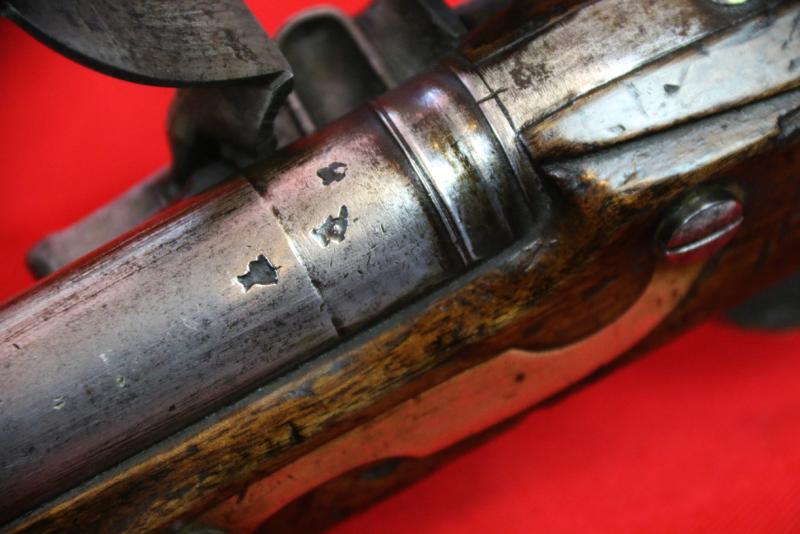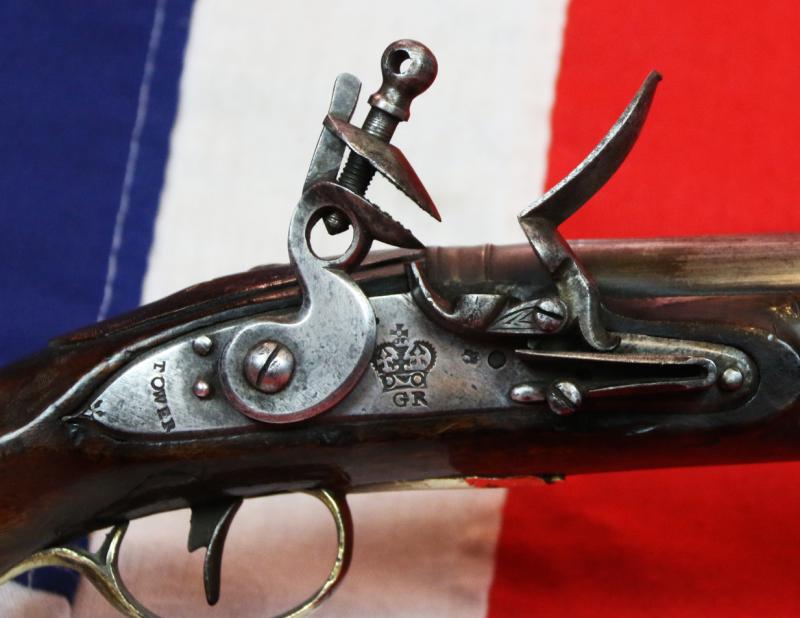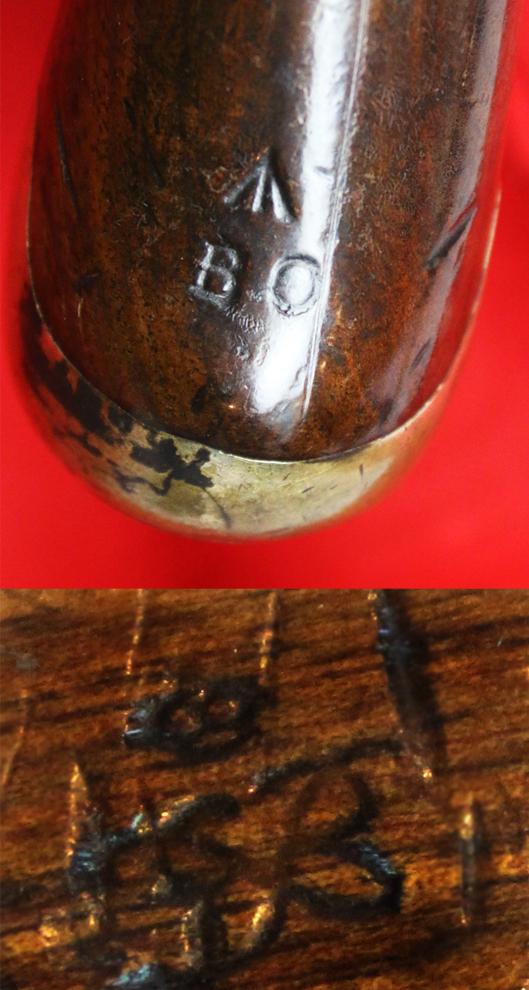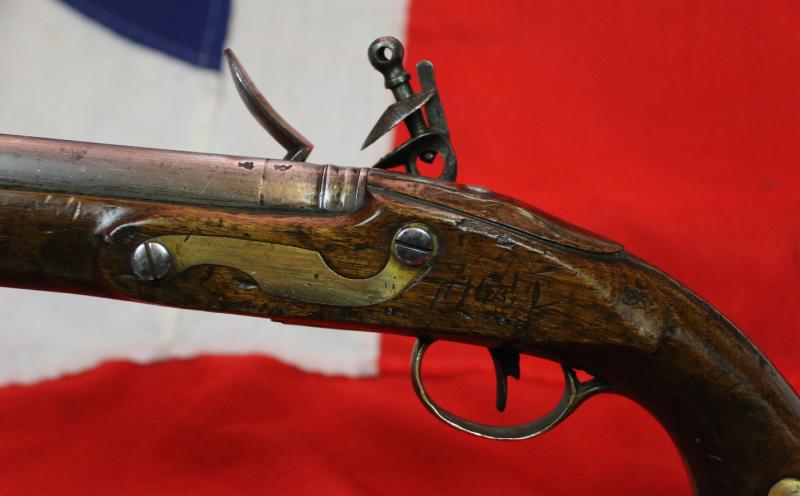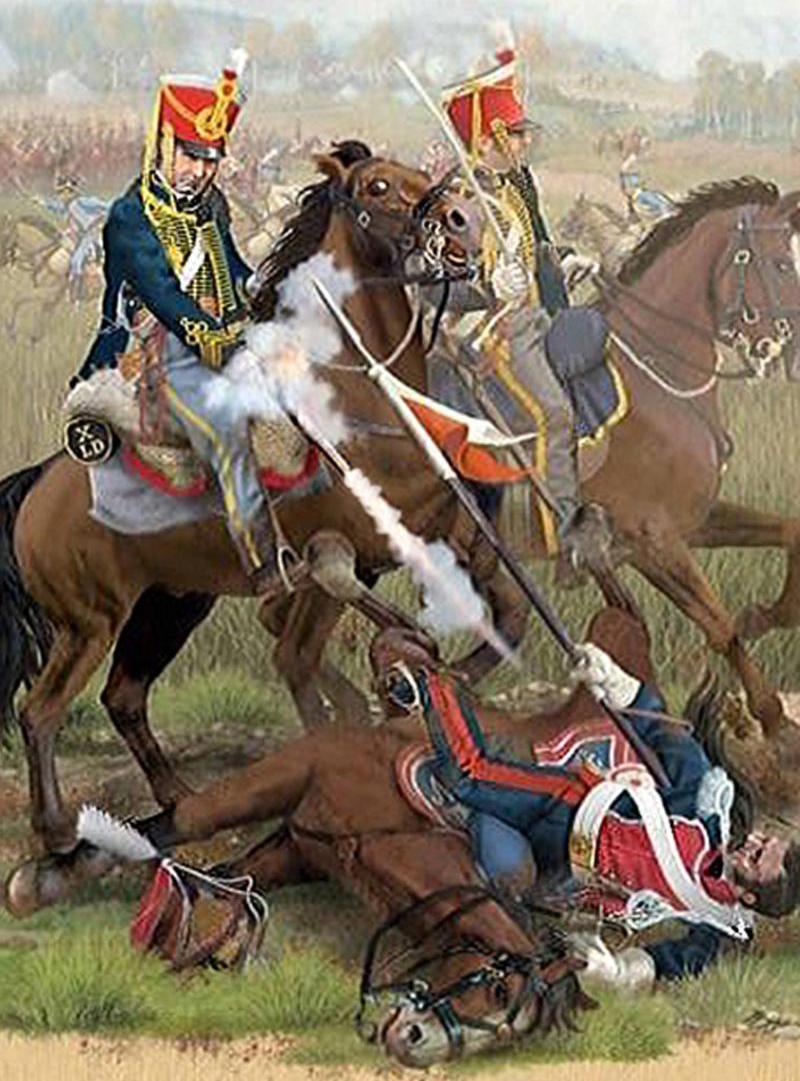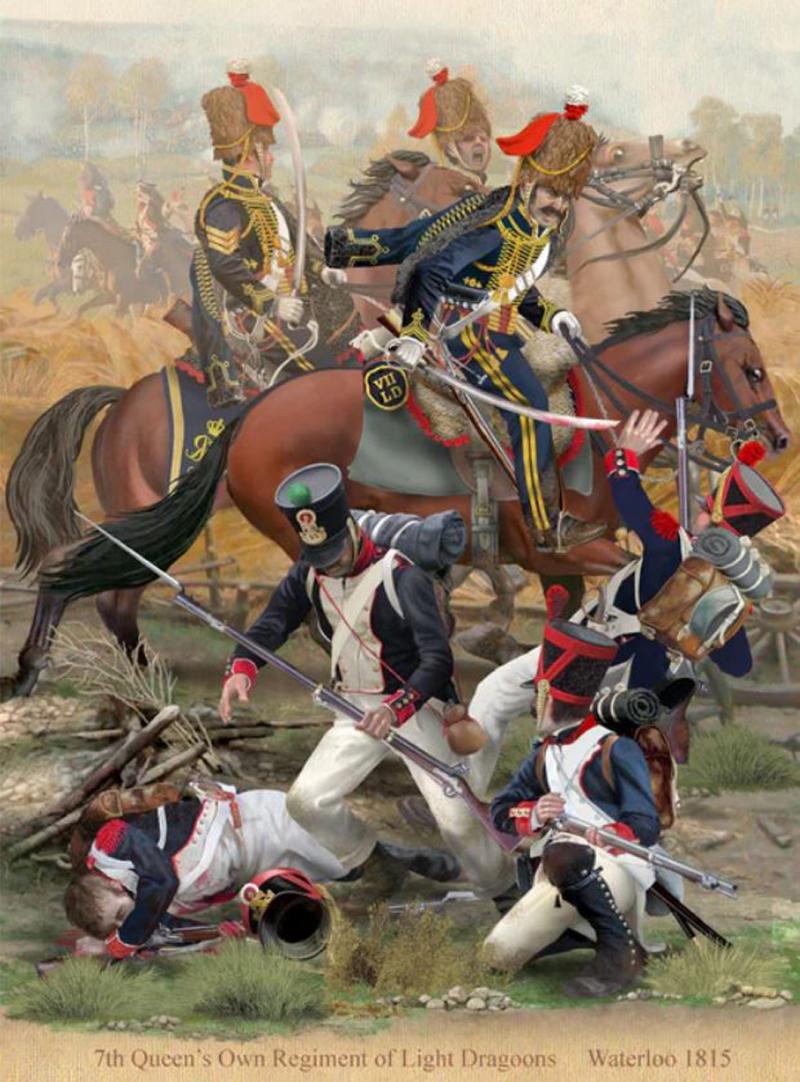A Superb 'Tower of London' Made Front Line Regimental British Light Dragoon & Hussars Flintlock Pistol Circa 1802 Napoleonic Wars, Peninsular War and Waterloo Service use
Excellent walnut stock with original patina to all parts steel brass and walnut. All fine brass fittings and captive ramrod. In original flintlock, made byThe Tower of London Armoury. GR Crown Tower stamped lock plate. With numerous ordnance inspectors stamps throughout.
This is the pattern of pistol for use by British Light Dragoon & Hussars Cavalry regiments, and called the New Land Pattern, used initially from around 1802, during the Peninsular War, the War of 1812, and the Hundred Days War, culminating at Waterloo.
It is simply a superb Napoleonic wars original collector's item and good condition example. Certainly with usual signs of combat service use but with excellent natural age patina. Excellent perfect crisp action.
Introduced in the 1796 and in production by 1802, the New Land Pattern Cavalry Pistol provided one model of pistol for all of Britain's light cavalry and horse artillery. Another new element was its swivel all steel ramrod, which greatly improved the process of loading the pistol on horseback and ensuring no loss of ramrod due to miss-handling or dropping..
The regiments that used this very pistol under The Duke of Wellington's command were;
Hussars
7th (Queen's Own) Regiment of (Light) Dragoons (Hussars) — white facings, silver lace and buttons, blue and white sash
15th (King's) Regiment of (Light) Dragoons (Hussars) — red facings, silver lace and buttons, red and yellow sash
18th Regiment of (Light) Dragoons (Hussars) — white facings, silver lace and buttons, blue and white sash, grey dolmans
Light Dragoons
8th (King's Royal Irish) Regiment of (Light) Dragoons — red facings, silver lace and buttons, blue and red belt, grey dolmans
9th Regiment of (Light) Dragoons — red facings, gold lace and buttons, blue and yellow belt
10th (Prince of Wales's Own Royal) Regiment of (Light) Dragoons — red facings, silver lace and buttons, red and yellow sash
11th Regiment of (Light) Dragoons — buff facings, silver lace and buttons, blue and buff belt
12th (Prince of Wales's) Regiment of (Light) Dragoons — yellow facings, silver lace and buttons, blue and yellow belt
13th Regiment of (Light) Dragoons — buff facings, gold lace and buttons, blue and buff belt
14th (Duchess of York's Own) Regiment of (Light) Dragoons — orange facings, silver lace and buttons, blue and orange belts
16th (Queen's) Regiment of (Light) Dragoons — red facings, silver lace and buttons, blue and red belt
17th Regiment of (Light) Dragoons — white facings, silver lace and buttons, blue and white belt
19th Regiment of (Light) Dragoons — yellow facings, gold lace and buttons, blue and yellow belt
20th Regiment of (Light) Dragoons — orange facings, gold lace and buttons, blue and orange belt
21st Regiment of (Light) Dragoons — pink facings (black from 1814), gold lace and buttons, blue and pink belt
22nd Regiment of (Light) Dragoons — pink facings, gold lace and buttons, blue and pink belt, grey dolmans
23rd Regiment of (Light) Dragoons — red facings (maybe yellow), silver lace and buttons, blue and red belt
24th Regiment of (Light) Dragoons — grey facings, gold lace and buttons, blue and grey belt
25th Regiment of (Light) Dragoons — grey facings, silver lace and buttons, blue and grey belt, grey dolmans
The division between 'heavy' and light was very marked during Wellington's time: 'heavy' cavalry were huge men on big horses, 'light' cavalry were more agile troopers on smaller mounts who could harass as well as shock.
During the Napoleonic Wars, French cavalry was un-excelled. Later, as casualties and the passage of years took their toll, Napoleon found it difficult to maintain the same high standards of cavalry performance. At the same time, the British and their allies steadily improved on their cavalry, mainly by devoting more attention to its organization and training as well as by copying many of the French tactics, organization and methods. During the Peninsular War, Wellington paid little heed to the employment of cavalry in operations, using it mainly for covering retreats and chasing routed French forces. But by the time of Waterloo it was the English cavalry that smashed the final attack of Napoleon's Old Guard.
We show superb Napoleonic Light Dragoons illustration prints in the gallery by David Higham, that were gifted to us by a grateful client.
These can be bought at the link below, and they are extremely comfortably priced.
https://www.printsforartssake.com/products/7th-queens-own-british-regiment-of-light-dragoons-waterloo-1815.
This is a complimentary recommendation, for which we make no financial gain
Every single item from The Lanes Armoury is accompanied by our unique Certificate of Authenticity. Part of our continued dedication to maintain the standards forged by us over the past 100 years of our family’s trading, as Britain’s oldest established, and favourite, armoury and gallery
Code: 25762
2550.00 GBP

